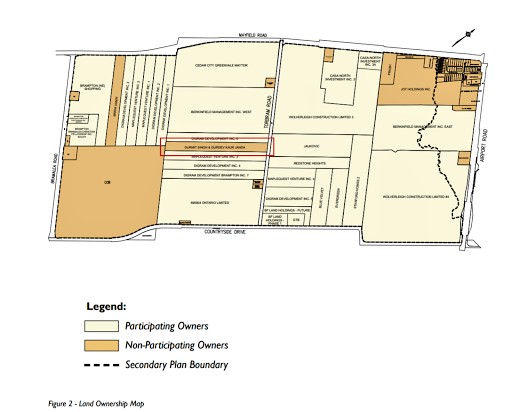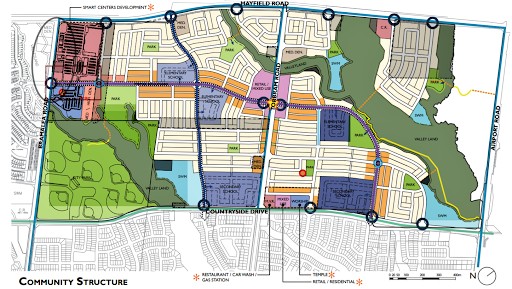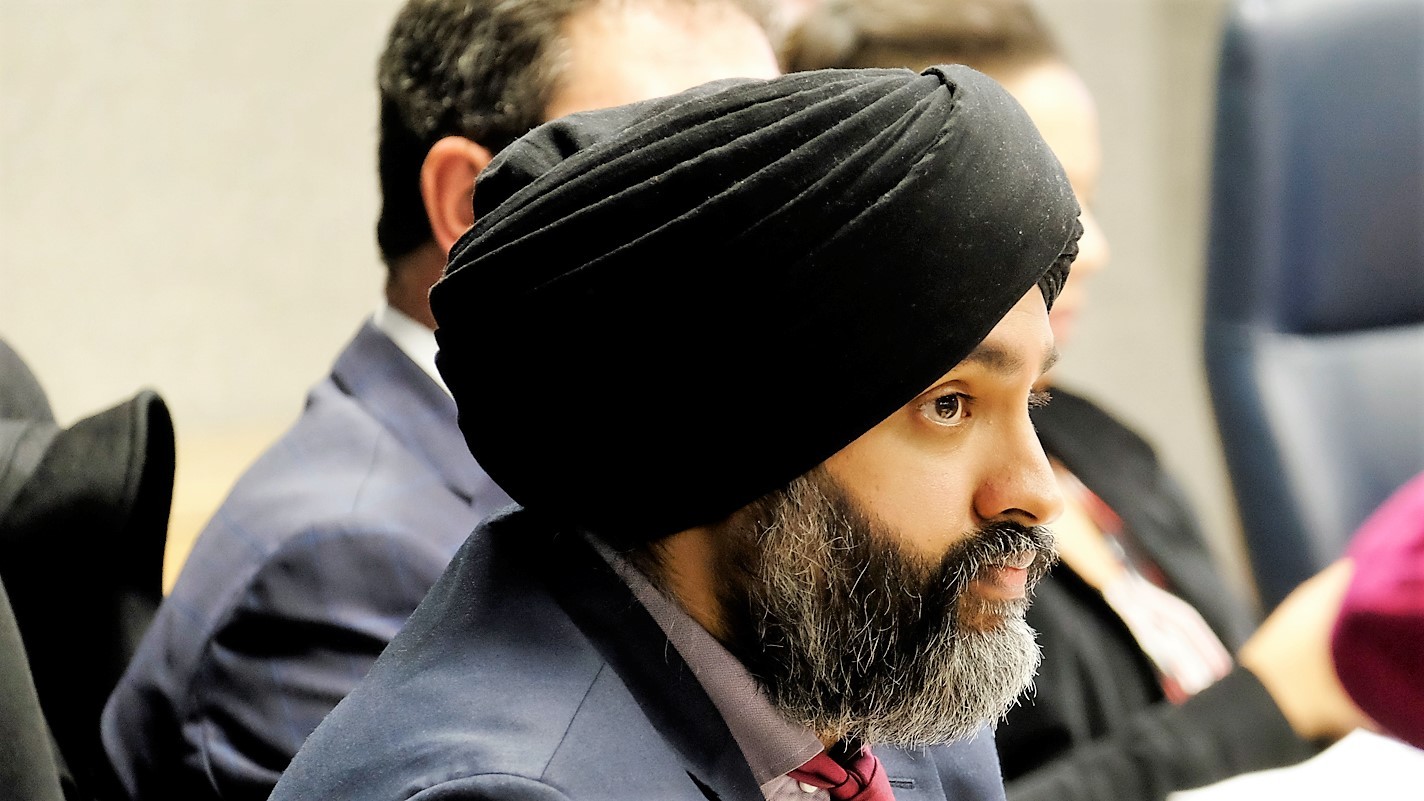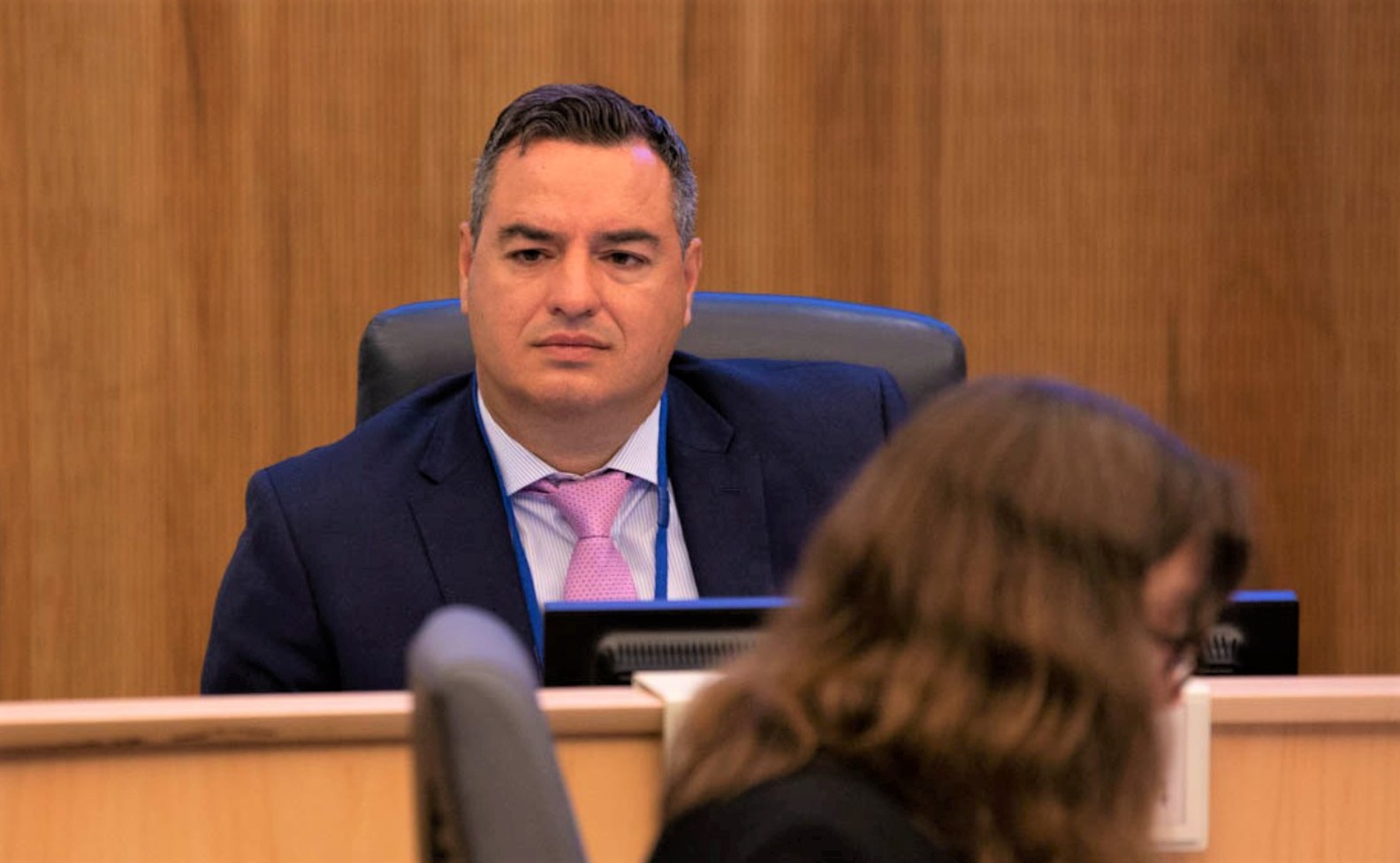
‘A real dangerous precedent’: Move to expropriate private land to help developers hidden from Brampton taxpayers
In a highly unusual move, during the closed-session portion of a committee of council meeting on November 17, councillors discussed a plan to use taxpayer dollars for the expropriation of land to allow a private development group to build a huge subdivision on a 790-acre quadrant of land.
But no one in the public knows what was said behind closed doors.
Expropriation powers allow governments to use public funds to forcibly purchase land from private property owners that is needed for the good of the broader public; common examples include the construction of roads, subways or rail lines.
“Philosophically, I don’t believe this is in the City’s interests and this is not business the City usually conducts — and we’ve never done this before,” Councillor Martin Medeiros, chair of the City’s planning and development committee, said when a motion confirming the decision was passed.
Such a decision is supposed to be handled by the planning committee Medeiros chairs, with him in the driver’s seat to ensure full transparency and adherence to mandated planning procedures.
Instead, it’s unclear how the motion to expropriate came about, or if City planning staff were brought in to provide guidance on the appropriateness of the unprecedented move that was handled through committee of council instead.
Councillor Harkirat Singh moved the successful motion to pursue expropriation for the developers, but he did not respond to questions from The Pointer.
It’s unclear why he did it and why the normal process of working through the planning committee was circumvented.
“You know our hands are tied … I can’t talk about why I support it as I did in-camera, and I didn’t expect that from you,” Singh said during the open session of the meeting, pushing back against Medeiros’ decision to publicly state his frustration.
Brampton planning staff confirmed during the meeting that an expropriation by the City for developer interests had not been done, saying they were “not aware of this having occurred before”.
They were responding to the concern expressed by Medeiros, who chairs the committee planning staff usually advise, to ensure municipal and provincial rules around land use, construction and zoning are followed.

The proposed development that may benefit from land expropriation is on the edge of Brampton.
(Image from Isaac Callan/The Pointer)
According to the City’s website the Planning Committee “shall consider and make recommendations to Council for the following matters: matters including land use planning, growth management, urban design and operational matters within the jurisdiction of the Chief Building Official.”
The motion enacting the closed-door in-camera decision gives Brampton the authority to “make an application for approval to expropriate” a portion of land belonging to Gurmit Singh and Gurdev Kaur Janda (the Janda lands). This, the City says, will “facilitate the construction of municipal infrastructure to service lands within the Countryside Villages Secondary Plan”, specifically lands that are known as Block 48-2. Municipal servicing is required for new developments to be built and ranges from wastewater pipes to roads and trails.
The City plans to expropriate the Janda property located in the middle of land assembled for the development and key to providing service to the proposed subdivision, the motion says.

The land that is subject to expropriation is located within the centre of the proposed subdivision area.
(Image from City of Brampton)
The move is unusual. It appears that by expropriating this land the City will spring a subdivision development on almost 800 acres of land, which private landowners will benefit from. Cities traditionally provide services on lands for developers which are already available, not through the non-negotiable purchase of another private citizen’s land.
The Expropriations Act (1990), which Brampton will use in this process, says compensation will be based on market land value, damages for disturbance and any special difficulties relocating, among other factors.
The Janda lands that will be expropriated are key to servicing the proposed development and, it appears, those who hope to build it have failed to agree on a deal so far. Since the developer needs the land to open an entire subdivision, it’s likely that a higher than market-rate price was offered.
Janda’s bargaining position will not be reflected in any payments made through expropriation. The Act says that, in deciding market value, the “special use to which the expropriating authority will put the land” will not be considered, nor will “any increase or decrease in the value of the land resulting from the development or the imminence of the development in respect of which the expropriation is made”.
The owners of the Janda lands declined to comment.
The development that could be sprung by the expropriation, pushed forward by a group calling itself Brampton Area 48 Landowners Group, has been in the works for decades. A planning report for the subdivision from May 2017 says that preliminary work began in 2004, with a design and open space study completed in 2009.
The document proposes a sprawling subdivision dominated by single-family detached homes. It includes some townhouses and other uses such as a place of worship and commercial space. It is proposed for either side of Torbram Road, with the land Brampton has now moved to expropriate in the western portion.

The proposed development is dominated by single-family homes, shown in this illustration in light yellow.
(Image from the City of Brampton)
The landowners group is made of a variety of different owners. A map included in the 2017 report shows Wolverleigh Construction owns large portions of the land, along with Cedar City Greenvale Maytor and a range of numbered Ontario companies.
A May 2013 application to amend Brampton’s official plan to allow for the development of the area identified Metrus Development as a key landowner and developer in the area. Throughout the document, the Brampton Area 48 Landowners Group Inc. is referred to followed by “(c/o Metrus Development Inc.)”. Metrus Development rebranded as DG Development and is owned by the DeGasperis family, one of the largest builders in Ontario.
Darren Steedman, DG Group’s Vice President, is listed in Brampton’s lobbyist registrar as active between 2019 and 2020. His lobby efforts are described as “to discuss our DG projects in Brampton” and the area specified to Wards 3,4,7 and 8. The land Brampton plans to expropriate is in Ward 10.
The Pointer sent questions to Metrus Properties and was told that the company does not “like to get involved with” any media. A request for comment sent directly to Steedman’s email, provided by his assistant, was not returned in time for publication.

Harkirat Singh moved the motion.
(Image from The Pointer files)
Brampton’s motion, proposing to use public powers and funds to move forward a private development, states a series of reasons. One justification it provides is: “Promoting economic development and the social and environmental well-being of the City including, without limitation, through the timely development of lands required to meet the City’s growth targets, and generation of revenue through development charges and property taxes to cover the City’s growth and operations/maintenance/replacement costs”.
The line suggests the City is using its public powers, and funding, to support a private developer on the basis of economic growth, but it’s the developers who will benefit immediately.
The vast majority of the units do not, from the 2017 proposal, appear to be dense or come with guarantees of affordability. In short, there is nothing particularly unique, or special about this development application. By the motion’s logic, almost every developer could call on Brampton to use expropriation powers to forcibly buy land it needs to complete a project, rather than negotiating with landowners as they have traditionally had to.
“It sets a real dangerous precedent going forward,” Medeiros said.
It could, conceivably, lead to any property being targeted for expropriation, in order to advance a developer’s plans.
As chair of the planning and development committee, Medeiros should have broad authority over how planning discussions are handled. His committee should be the venue for conversations around expropriation of land, discussions he would lead as the chair. In his role he is expected to seek direction from technical planning staff, who consider a wide range of variables when presenting their expert recommendations to the planning committee. It appears none of this was done. The decision to hold an in-camera debate on the matter at a committee of council meeting instead, stripped the planning chair of his usual oversight and accountability powers.
The City of Brampton did not address questions from The Pointer regarding if public money is being spent on the expropriation, or why the municipality is taking the rare step. A spokesperson quoted portions of the public motion in a short response.
“The lands that are being acquired will fulfill the municipal purpose identified in the authorizing by-law,” the spokesperson said. “When the City expropriates any land, it is required to pay compensation in accordance with the Expropriations Act, R.S.O. 1990, c. E.26.”
A comparable though not identical case ended up before the courts.
Around 2005, Toyota Canada indicated it would build a manufacturing plant in Woodstock near London. The County of Oxford moved to secure lands to allow the job-creating project to proceed. It negotiated 27 of the 28 parcels of land required for a plant, but was unable to agree on terms to buy a mall from Blandford Square Developments Limited.
The County used expropriation powers to forcibly buy the land from Blandford Square Developments for $4.2 million, and then transferred all 28 parcels of land to Toyota at the price they had purchased them for. The Blandford Square Developments lands were transferred to Toyota at their expropriation price, rather than forcing the company to negotiate for them.
“The appellants say that the expropriation price is less than the fair market value of the lands and therefore contravenes ss. 106(1) and (2)(c) of the Municipal Act,” a 2007 Court of Appeal for Ontario ruling, that allowed Blandford Square Developments to proceed with their case, explained.

The area of the proposed subdivision development.
(Google Satellite)
The case went through hearings, with a statement of facts, rather than a full trial.
The case made it to the steps of the Supreme Court of Canada, which chose not to hear the decision. Although some sided with Blandford Square Developments arguing that Oxford County had essentially used its power unfairly, the country’s top court decided not to proceed.
In the Toyota case, it could be argued that local taxpayers who would work at the facility, and all the other surrounding businesses frequented by employees benefited from the decision. In the Brampton case, it seems hard to justify economic benefits that would flow to local residents, and area businesses would benefit from whatever growth inevitably occurs under the city’s master plan to build-out the area, but the developers are almost guaranteed to walk away with handsome profits partly derived from the use of public funds and expropriation powers intended for other public needs.
The Bramalea Christian Fellowship is one of the smallest landowners in the group, with an existing Church on a tiny parcel of land in the west part of the project site. It is being held up as an important part of the development, due to the affordable housing units it may provide. Pastor Randy Nielson told The Pointer he is “involved” with a 6-storey, 90-unit building in the area that has had low-income tenants since February.
“We look forward to permanent servicing to be installed in our area (a small portion of the services will pass through the Janda land) so that our existing property, as well as others, can benefit of the needed community infrastructure that it provides,” he said in an email.
The decision to begin the process of expropriation was shrouded in secrecy.
After Medeiros stated his concerns, councillors Gurpreet Dhillon and Singh, who both supported the motion, attempted to justify their positions. The City’s solicitor, Sameer Akhtar, who has repeatedly tried to send councillors into closed session when it is not clearly necessary, intervened and shut down the public remarks.
At a recent meeting, Akhtar attempted to send a discussion in-camera after Councillor Jeff Bowman proposed a commemorative plaque.
When the expropriation matter was dealt with Dhillon said, “I know it is late but I think whoever is listening in I think it would be appropriate for them to know what exactly this is,” the councillor said, asking staff to summarize the decision councillors were being asked to make for the benefit of a development group.
Before staffers could answer, Akhtar jumped in. “I think a discussion on this topic is more appropriate for closed session, the provision of legal advice in open session is problematic and we are discussing a potential acquisition,” he said. “My understanding was we were coming out into open session to vote on the motion in front of us and not to get into a substantive discussion on matters that were discussed in closed session.”

Martin Medeiros does not think the move is in the City’s best interests.
(Image from The Pointer’s files)
Akhtar’s push to shut the public out of a key decision meant discussion between councillors was frustrated and uninformative.
Since he was hired under Mayor Patrick Brown as the head of the City’s legal department, Akhtar has routinely pushed debates and discussions that are supposed to be held in full view of the public behind closed doors.
No one explained why a public body was planning to take private land to help a group of developers; no one said if it was the developer who had approached the City; no one explained how much public money might be devoted to the project; and no one explained what provisions for affordable housing, dense developments or public transit would be included in the plan.
It also remains unclear why the planning chair and his committee was circumvented from the process.
The Pointer asked the City why it was expropriating the land, why taxpayer funds might be used, if Brampton knew of any other municipalities taking this type of action in the past and if the Janda lands will receive fair market value. No direct responses were provided.
Janda could be served with a notice of expropriation. Council will have the opportunity to decide whether or not to proceed with the expropriation before a final decision is made.
“This is a first step in a process relating to the expropriation, the item really will come back to council at a later point in time … to choose, by council, whether to proceed with it or not,” Allan Parsons, Brampton’s director of development services, told members, some of whom seemed confused by the unusual move.
“I do not support this motion,” Medeiros, the chair of planning, said.
Email: [email protected]
Twitter: @isaaccallan
Tel: 647 561-4879
COVID-19 is impacting all Canadians. At a time when vital public information is needed by everyone, The Pointer has taken down our paywall on all stories relating to the pandemic and those of public interest to ensure every resident of Brampton and Mississauga has access to the facts. For those who are able, we encourage you to consider a subscription. This will help us report on important public interest issues the community needs to know about now more than ever. You can register for a 30-day free trial HERE. Thereafter, The Pointer will charge $10 a month and you can cancel any time right on the website. Thank you
Submit a correction about this story


